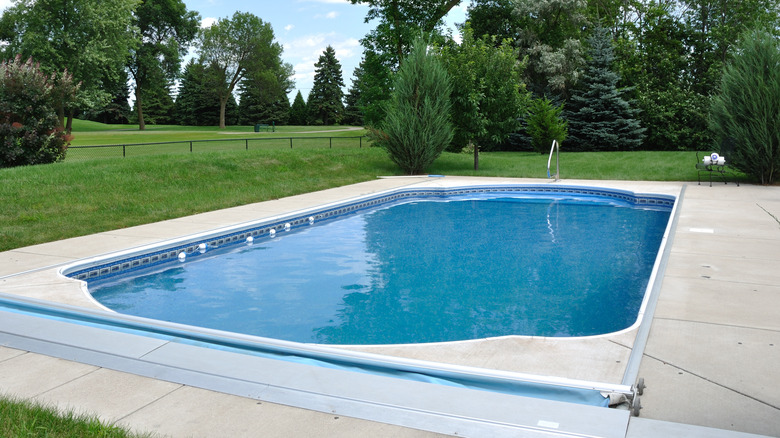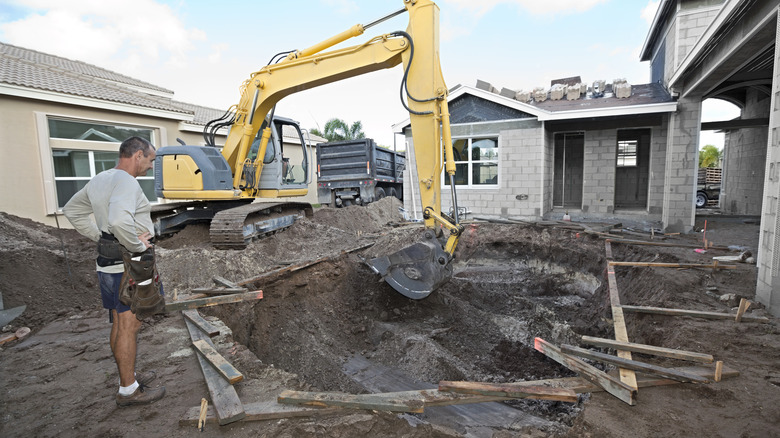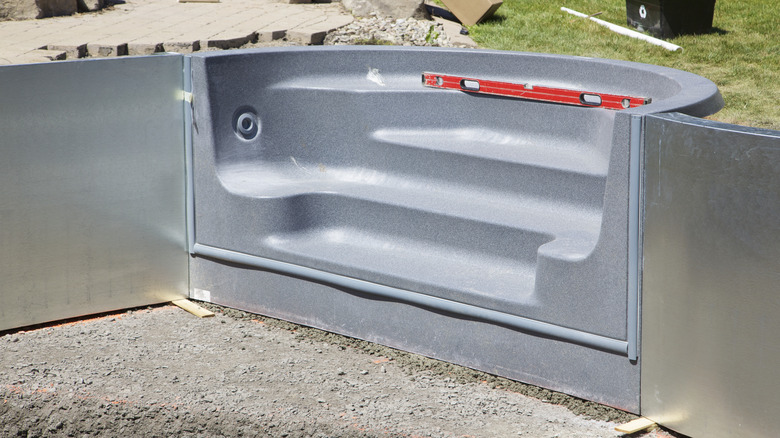Should You DIY An Inground Pool Or Leave It To The Pros? Our Pool Expert Weighs In
The thought of having an inground pool in your backyard is always alluring, but these pools can range in price from $10,000 to well over $50,000. That might lead you to think that DIYing your inground pool could help reduce some costs. Before you rent the necessary equipment, though, check out what Jimmie Meece, brand president at America's Swimming Pool Company, has to say.
In an exclusive interview with House Digest, Meece told us that DIYing can be an option: "There are companies that sell DIY pool kits and plenty of instructional videos that will explain the process from start to finish. For someone who has a lot of knowledge and experience with larger construction projects or is eager to learn on the job, it's certainly possible to build your own pool."
But there's more to consider before you make the decision to jump into a home improvement project that's probably better left to the pros. Meece noted, "However, a project can often be completed in less time and less expensively when hiring a licensed pool contractor because additional costs and delays associated with learning on the job are avoided."
Overcoming a lack of skills won't be easy
With dozens of how-to videos out there, it's easy to think a DIY inground pool just takes time and hard work, but there's more to it. In his exclusive interview with House Digest, Jimmie Meece stated, "All inground pools share common building steps, such as site work, excavation, electrical and plumbing. A DIYer will need to prepare the site before construction or installation can begin, leveling and excavating as necessary." That requires knowing how to operate the necessary equipment for these tasks. Meece added, "They also need to properly install all necessary plumbing and make electrical connections for the filtration equipment, which requires knowledge of hydrodynamics and local building codes."
"Depending on the type of pool they choose — vinyl-lined, fiberglass, or concrete, they will have additional steps to complete," Meece continued, explaining that each pool type has its own requirements. Vinyl-lined pools, for example, require a steel or composite wall system. Meece warned, "It's important for DIYers to take special care to secure the liner correctly to remove wrinkles and folds." For fiberglass pools, which come in a single piece, he advised, "The keys are to make a stable pool floor with properly compacted stone and to create a secure footing around the perimeter of the pool with concrete and reinforced steel." Concrete pools require a lot of experience: "For a concrete pool, it's necessary to know how to work with rebar, install shotcrete or gunite, install coping and tile, and finish the pool with the plaster, quartz, or pebble material of your choice."
Before you DIY, consider what's going to go into the process
Jimmie Meece provided further insight into installing an inground pool in his exclusive interview with House Digest. He advised, "A successful pool building project begins with thorough planning and site analysis." To meet these challenges head on, Meece recommends working with a professional. "A professional will help avoid issues with local regulations and permitting that can result in delays or expensive fines. They will also know how to properly plan around and prepare the site so you don't run into issues with drainage or soil stability," he said. Such issues impact not only you but your neighbors and the local watershed as well.
There are numerous types of inground pools to choose from, and Meece explained further why he believes a pro is the better decision: "An expert pool builder will not only be able to work with you every step of the way to make your backyard pool visions a reality but also solve any unexpected issues that may arise during the project and avoid making mistakes that might show up months or years later in the form of leaks or other damage."


